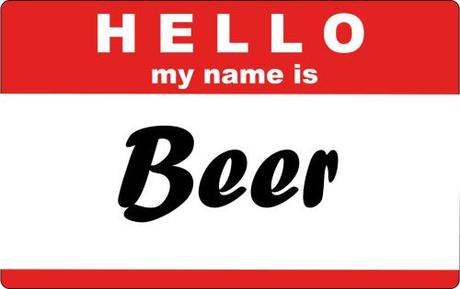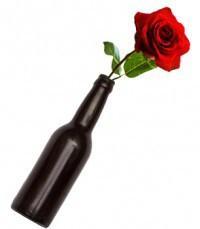
“What’s in a name?” Juliet famously asked Romeo … “That which we call a rose by any other name would smell as sweet.”
Maybe that which we drink a beer by any other name would taste just as good? Well, let’s not get our Bud Light and Pliny crisscrossed.
But the naming of a beer did recently strike me as an odd phenomenon. In this age of tight shelf space and cunning consumers, what’s in a name? How might the name of a beer influence our interest?
What piqued my interest was a recent interview with Dave Engbers, a co-founder of Founders Brewing Company. While discussing IPAs and the evolution of American taste for that style, Engbers dropped this interesting piece of marketing history about Centennial IPA, Founders’ India pale ale that has been around since 2000 and named after the hop used in its brewing process:
“That was maybe one of our original pitfalls in our marketing. We didn’t realize how important branding was,” Engbers noted. “It’s called Centennial IPA because we use centennial hops. Not very creative, but it gets the job done.”
So I wonder: What’s in a name when it comes to beer sales?
While Centennial IPA wasn’t a hit initially – thanks to the name or not – it eventually caught on as tastes changed. But you know what? There’s a new king in town at Founders: “All Day IPA” is now their top-selling brand after being on the market for three months.
There’s certainly more interest in IPAs these days compared to2000, as it’s the fastest growing beer for on-premise sales at restaurants and bars. But I also wonder if using a catchy name like “All Day IPA” doesn’t hurt, either. After all, using the right name can be a powerful tool:
Actually, what is in a name means a lot to a product. Sometimes it is the catchy name that gets the attention of the consumer. It may be because it stimulated an impulse or simply caught their eye.
Another consideration is that the name is easy to remember and share with others, so word of mouth (still the most popular form of recommendation for products) becomes even easier or the name becomes so familiar that consumers jump on the popularity bandwagon. As in, “I’ve heard of that somewhere, so it must be good…I should buy it.”
Luckily for Founders, their new beer also coincides with the influx of “India Session Ales” that are gaining traction in the U.S.
While Founders has had success with their new beer, I wanted to look at other craft brewers to see if names mattered at all to their top-selling brands.
Here’s a chart of 20 of the best-selling craft breweries (as defined by the Brewers Association) with their top-selling beer and its style. I sourced all this information through various Google searches:
Beer Company
Beer Name
Beer Style
Abita Brewing Abita Amber Amber
Alaskan Brewing Alaskan Amber Amber
Bell’s Brewery Oberon Wheat
Boston Beer Company Boston Lager “Vienna” lager
Boulevard Brewing Unfiltered Wheat Wheat
Brooklyn Brewery Brooklyn Lager “Vienna” lager
Craft Brew Alliance/Red Hook Long Hammer IPA
Deschutes Brewery Mirror Pond/Black Butte Pale ale/Porter
Dogfish Head Craft Brewery 60 Minute IPA
Great Lakes Brewing Dortmunder Gold “Dortmunder” lager
Harpoon Brewery Harpoon IPA IPA
Lagunitas Brewing Lagunitas IPA IPA
Long Trail Brewing Long Trail Ale German altbier
Magic Hat Brewing #9 Fruit/Pale ale
Matt Brewing Company/Saranac Saranac Pale Ale Pale ale
New Belgium Brewing Fat Tire Amber
Shipyard Brewing Export Ale Golden/Blond
Sierra Nevada Brewing Pale Ale Pale ale
Spoetzl Brewery Shiner Bock Bock
Stone Brewing Company Stone IPA IPA
Not many surprises, right? It’s kind of a boring list of names, most of which are simply the beer’s style or the brewery name and style. Lame.
Here’s the obvious, underlying fact of that chart: the best-selling brands also tend to be the original, flagship beers of a brewery. Stone’s Arrogant Bastard may catch your eye, but it’s Plain Jane “Stone IPA” that rules the roost.

That which we drink a beer by any other name would taste just as good?
All this makes the case of Founders even more interesting. It’s hard for a new brand to blow people away – let alone in three months – but All Day IPA did it. Is it lightening in a bottle? Considering the chart above, an easy-to-understand name like “Centennial IPA” and it’s track record of being around for more than a decade would lead you to believe it could and should be the top seller.
Jeff Alworth offered a similar take in 2011. He examined top-selling craft beer brands to find Sierra Nevada’s Torpedo was selling really well, but it stood out because it was the newest beer among long-standing best sellers. In his observations, there was an eight-year difference between when Torpedo debuted (2009) and the next newest beer, Sam Adams Light (2001). Sierra Nevada’s “Pale Ale” was and is still on top, boring name or not.
To me, this reiterates an obvious factor that it’s difficult for new beer brands to perform exceedingly well out of the gate. Competing against staples that have been around forever – even within a brewery’s own lineup – makes it hard for new brands to not necessarily succeed, but thrive at unprecedented levels.
However, All Day IPA has three things going for it (aside from taste):
- It’s an IPA in a time when IPA is very popular.
- It bills itself as a “session beer” at a time when session beers are growing in popularity.
- It’s got a catchy name.
Excluding taste, is this the Holy Trinity of beer marketing? I only ask because of how quickly “All Day IPA” has shot to the top of Founders’ charts.
What do you think? What’s in a (beer) name?
+Bryan Roth
“Don’t drink to get drunk. Drink to enjoy life.” — Jack Kerouac

